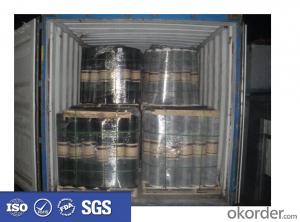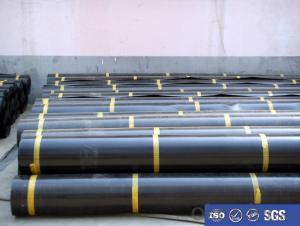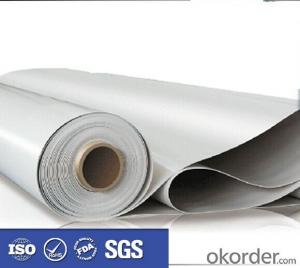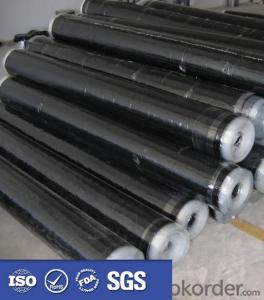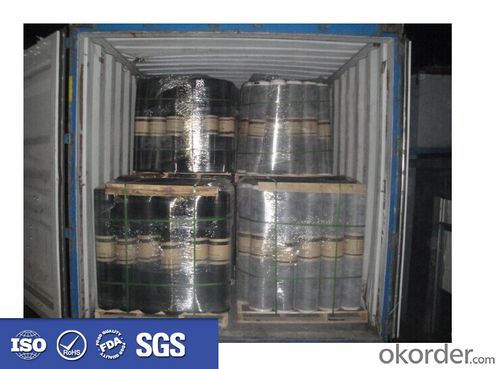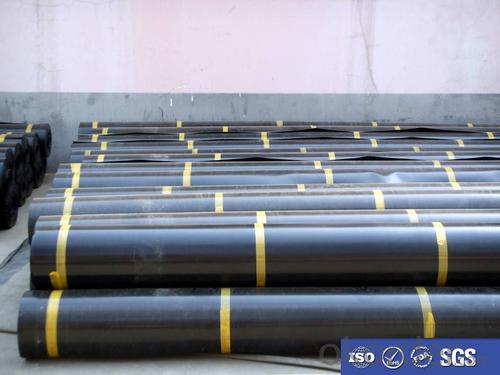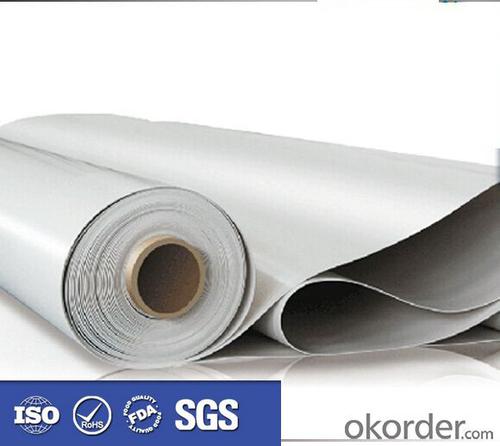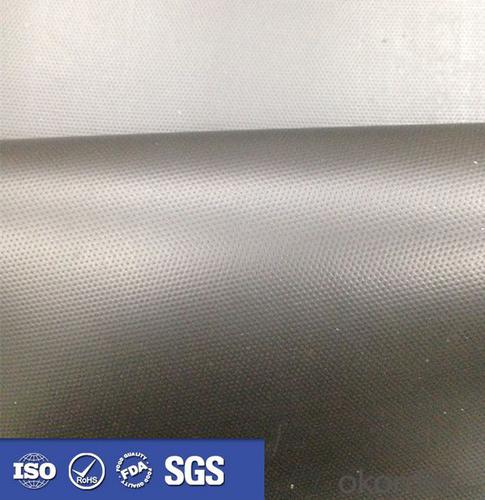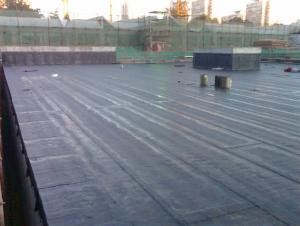EPDM Waterproofing Rubber Roofing Membrane New Kind
- Loading Port:
- Qingdao
- Payment Terms:
- TT OR LC
- Min Order Qty:
- 2000 m²
- Supply Capability:
- 8000000 m²/month
OKorder Service Pledge
OKorder Financial Service
You Might Also Like
Description Of EPDM Waterproofing Rubber Roofing Membrane New Kind:
Self adhesive waterproof rolling material:
thickness:1.2/1.5/2.0mm
length/roll:10/20m
width/roll:1.02m
Low temperature:-15 -20,-30
Main Features of EPDM Waterproofing Rubber Roofing Membrane New Kind:
1) High tear
2) High puncturing strength
3) Great temperature resistance.
4) High dimensional stability
Specifications of EPDM Waterproofing Rubber Roofing Membrane New Kind:
Material | EPDM Self-adhesive Waterproof Membrane |
Size | 1.2m (width)*20m (length) or customized, weldable type 2.05m or 4m width |
Thick | 1.2mm, 1.5mm, 2.0mm |
Type | Vulcanized & Weldable |
Pattern | Non-reinforced (homogeneous) |
Certificate | ISO9001/14001 |
Applications of EPDM Waterproofing Rubber Roofing Membrane New Kind:
1.It is widely used in civil and industry construction.
2.The waterproof,dampproof of the roofs,basements,toilets etc;
3.And the waterproofing of subway,underground,bridges,car parking,tunnels,reserviors,pool etc.
4.SBS modified bitumen waterproof membrane is specially suitable to the building waterproofing in cold area and to the buildings of changeable constructions
5.APP specially suitable to areas of high temperature and of strong sunshine.
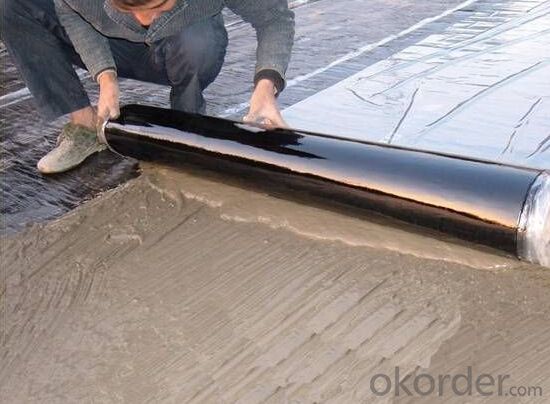


FAQ:
1. What are we supplying?
We are specialized in producing Colorful Asphalt Roof Shingle, SBS/APP modified bitumen waterproof membrane, Self adhesive bitumen waterproof membrane, PVC waterproofing membrane, EPDM rubber roofing membrane, Single Component Polyurethane Waterproof Coating, and Spray Polyurea Waterproof Coating.
2. How Many years experience do we have?
We have been exported to more than 20 countries in the past 15 years.
3. How long do we usually reply your request?
We always reply our customer within 24 hours.
- Q: Can a waterproofing membrane be used on stone block surfaces?
- Yes, a waterproofing membrane can be used on stone block surfaces. A waterproofing membrane is designed to provide a protective barrier against water and moisture, and it can be applied to various surfaces, including stone blocks. This membrane acts as a barrier, preventing water from penetrating into the stone and causing damage such as cracking, spalling, or efflorescence. It helps to protect the stone blocks from water-related issues, including freeze-thaw damage and the growth of mold and mildew. Additionally, a waterproofing membrane can also enhance the overall durability and longevity of the stone blocks by protecting them from water damage. Therefore, using a waterproofing membrane on stone block surfaces is a recommended solution to ensure their long-term integrity and appearance.
- Q: Can a waterproofing membrane be used on precast chrome surfaces?
- Indeed, precast chrome surfaces can be safeguarded by employing a waterproofing membrane. These membranes are frequently utilized to shield surfaces against water harm and hinder moisture from infiltrating the structure. In addition, the application of a waterproofing membrane on precast chrome surfaces can prove advantageous by guaranteeing their endurance and robustness. By creating a barrier between the surface and any potential water infiltration, the membrane effectively safeguards the precast chrome, sustaining its aesthetic appeal and functionality. It is crucial to select a waterproofing membrane that is harmonious with chrome surfaces and adhere to the manufacturer's guidelines for accurate application.
- Q: Can a waterproofing membrane be used for a shower pan liner installation?
- Yes, a waterproofing membrane can be used for a shower pan liner installation. Waterproofing membranes are commonly used in shower installations to prevent water from seeping through the shower pan and causing damage to the surrounding areas. They provide an effective barrier against moisture and help to keep the shower area waterproof.
- Q: Can a waterproofing membrane be used for mechanical rooms?
- Yes, a waterproofing membrane can be used for mechanical rooms. Waterproofing membranes are commonly used in various areas such as basements, rooftops, and even mechanical rooms to prevent water infiltration and protect the underlying structure. By applying a waterproofing membrane, the mechanical room can be safeguarded against potential water damage and leaks, ensuring the longevity and efficiency of the equipment and systems within the space.
- Q: Can a waterproofing membrane be used in elevator pits?
- The utilization of a waterproofing membrane in elevator pits is possible. Due to their subterranean location, elevator pits are susceptible to water intrusion from sources like groundwater or moisture. A waterproofing membrane acts as a safeguarding layer that is applied to the walls and floor of the elevator pit, effectively obstructing the passage of water. This protective barrier prevents water from causing harm to vital components of the elevator system, such as electrical equipment, pumps, and hydraulic systems. Implementing a waterproofing membrane in elevator pits substantially diminishes the likelihood of water damage and corrosion, ensuring the elevator's safe and efficient operation.
- Q: Can a waterproofing membrane be used for plaza decks?
- Yes, a waterproofing membrane can be used for plaza decks. Waterproofing membranes are commonly used in construction to prevent water infiltration and protect the underlying structure. Plaza decks are outdoor spaces that require protection against water damage, making waterproofing membranes an ideal solution to ensure the longevity and durability of the deck.
- Q: Can a waterproofing membrane be used in conjunction with flooring materials?
- Indeed, flooring materials can be used in conjunction with a waterproofing membrane. It is actually quite common to advise the application of a waterproofing membrane while installing specific types of flooring, particularly in wet spaces such as bathrooms, kitchens, or basements. The waterproofing membrane functions as a shield against moisture, effectively thwarting water penetration that could potentially harm the flooring material or the subfloor. It provides safeguard against leaks, spills, and even excessive moisture in the atmosphere. Through the utilization of a waterproofing membrane, you can guarantee the longevity and sturdiness of your flooring, simultaneously upholding a waterproof and moisture-resistant environment.
- Q: How does a waterproofing membrane handle water vapor transmission?
- A waterproofing membrane handles water vapor transmission by preventing the passage of water vapor through its surface. It acts as a barrier to prevent moisture from penetrating the membrane, thus protecting the underlying structure from potential damage caused by moisture.
- Q: Are waterproofing membranes suitable for bridge abutments?
- Yes, waterproofing membranes are suitable for bridge abutments. Bridge abutments are the structures that support the ends of a bridge, and they are typically exposed to a significant amount of moisture and water. Waterproofing membranes are designed to provide a protective barrier against water and moisture intrusion, making them an ideal solution for bridge abutments. These membranes are typically made from materials such as bitumen, PVC, or EPDM, which are highly resistant to water penetration. Additionally, waterproofing membranes can also provide protection against other factors such as UV rays, chemicals, and temperature fluctuations. By installing waterproofing membranes on bridge abutments, the risk of water damage, deterioration, and corrosion can be significantly reduced, leading to increased durability and longevity of the bridge structure.
- Q: Can a waterproofing membrane be used for roof gardens?
- Yes, a waterproofing membrane can be used for roof gardens. In fact, it is highly recommended to have a waterproofing membrane installed on the roof before creating a garden to prevent water leakage and damage to the underlying structure. A waterproofing membrane acts as a barrier between the garden and the roof, ensuring that water does not seep through and cause problems such as leaks, mold, or structural damage. It helps to protect the roof from moisture, root penetration, and other environmental factors. So, using a waterproofing membrane is essential for the successful and long-lasting installation of a roof garden.
Send your message to us
EPDM Waterproofing Rubber Roofing Membrane New Kind
- Loading Port:
- Qingdao
- Payment Terms:
- TT OR LC
- Min Order Qty:
- 2000 m²
- Supply Capability:
- 8000000 m²/month
OKorder Service Pledge
OKorder Financial Service
Similar products
Hot products
Hot Searches
Related keywords
